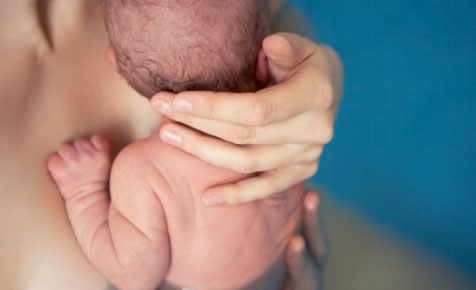 New Health Guide
New Health Guide
Quite like bottle-fed babies, breastfed babies will never drink the same amount of milk at each feed. Sometimes, they will drink more, but other occasions, they may not drink enough. It is therefore a bit confusing for mothers to determine how much milk to express and leave for their babies. You need to understand that your baby's needs will change as they grow, so how much breast milk at 2 weekswill be different from how much breast milk at 5 weeks. Still, you can find some figures about how much milk is essential for your baby at certain age.

It is important to understand that how much breastmilk at 2 weeks will usually depend on your baby. The fact is that during the first couple of weeks, most babies are not going to eat much, but they sure will eat quite often. There is, however, a rough guide that you can follow to get an idea about how much milk to express when your baby is of 2 weeks or older. Still, you should be ready to deal with instances when your baby may need more or may leave some in their bottle. It's all completely normal.
If your baby is only a couple of weeks old, you should calculate their body weight first and express 150ml of milk for per kg of body weight. It means that if your baby is of 4kg, they may drink about 600ml (4*150ml) in a 24-hour period. It also implies that you may see your baby drinking about 6 bottles in a day. The best thing is to divide 600ml into six feeds, giving your baby about 100ml of milk per feed.There is no set rule though – they may drink 120ml at one feed and drinking only 80ml at the next. Also, remember that the amount of milk your baby drinks will increase as they grow. The volume may go up to 120-150ml once your baby is a couple of months old. They may need about 150-220ml per feed when they are 3-4 months old.
When your baby is about 4-5 months, they will stop drinking enough milk. In most cases, they will only need 120ml per kg of body weight, so you need to adjust accordingly. Still, if your baby is a bit heavy, you may still be giving them about 220ml per bottle.
In case your baby is unwell or premature, it is common for you to leave them in the intensive care nursery for some time. They may not start drinking milk immediately, but they will eventually start. You will have to keep the volumes small in the beginning and increase it over time. You may have to start with 6-8 feeds of 150ml per kg of body weight. You need to increase the volumes considering their "adjusted premature age".
Sara: "There is no set scale to determine how much breastmilk at 2 weeksbecause every baby is different. If your baby has finished the bottle and is still crying, it usually means they need more. It is a good idea to feed them an ounce for every month old – add another ounce in every subsequent month. It means that a 3-month old baby would need about 4 ounces. This will go to 6 ounces when your baby is 5 months old. I started with 2 ounces when my daughter was only a week old. It is worth mentioning though that my daughter always needed more and was already up to 8 ounces when she was just 5 months. It's going stead since then."
Lily: "It will always depend on your baby and their needs. Don't expect them to eat much during the first couple of weeks, but they will demand more often. They may require about 3-4oz to go about 2-3 hours when they are about a month old. I nurse my 7 weeks baby for half an hour, but when it is pumped, she sometimes eats 4-4.5oz every 3-4 hours. What I have noticed is that she is not full when she's using the bottle because of its faster flow, so I sometimes have to burp her a bit longer for better digestion. My suggestion would be to pump for your normal nursing time and then feed whatever you get through a bottle. This will help you determine exactly how much your baby usually needs."
It is true that most women want to know exactly how much breastmilk at 2 weeks, but it is equally important to understand exactly when to feed your baby. Most moms often wait until they hear their baby crying – they take it a sign of hunger. What they don't realize is that crying is usually a "late" sign of hunger, which means your baby has already been feeling hungry for quite some time and is now so upset. Similarly, you need to understand that crying is not always the sign of hunger – they may cry when they are a bit bored, over-stimulated, or too hot or too cold.
There are certain signs suggesting you need to feed your baby. For instance, they'd be moving their heads from one side to the other with their tongues stuck out. You may need to feed your baby when they open their mouth, place their fists or hands to their mouths, nuzzle again your breasts, or move their mouths to something that's touching or stroking their cheeks.
It is important that you alternate breasts because it will prevent painful engorgement and keep up milk supply in both breasts. The best thing is to give each breast the same amount of nursing time. What you should bear in mind though is that not every baby is the same – some may feel satisfied after 5-8 minutes on each breast, while others may require 15 minutes or more on each side. Both situations are normal. Just pay attention to what suits your baby more.